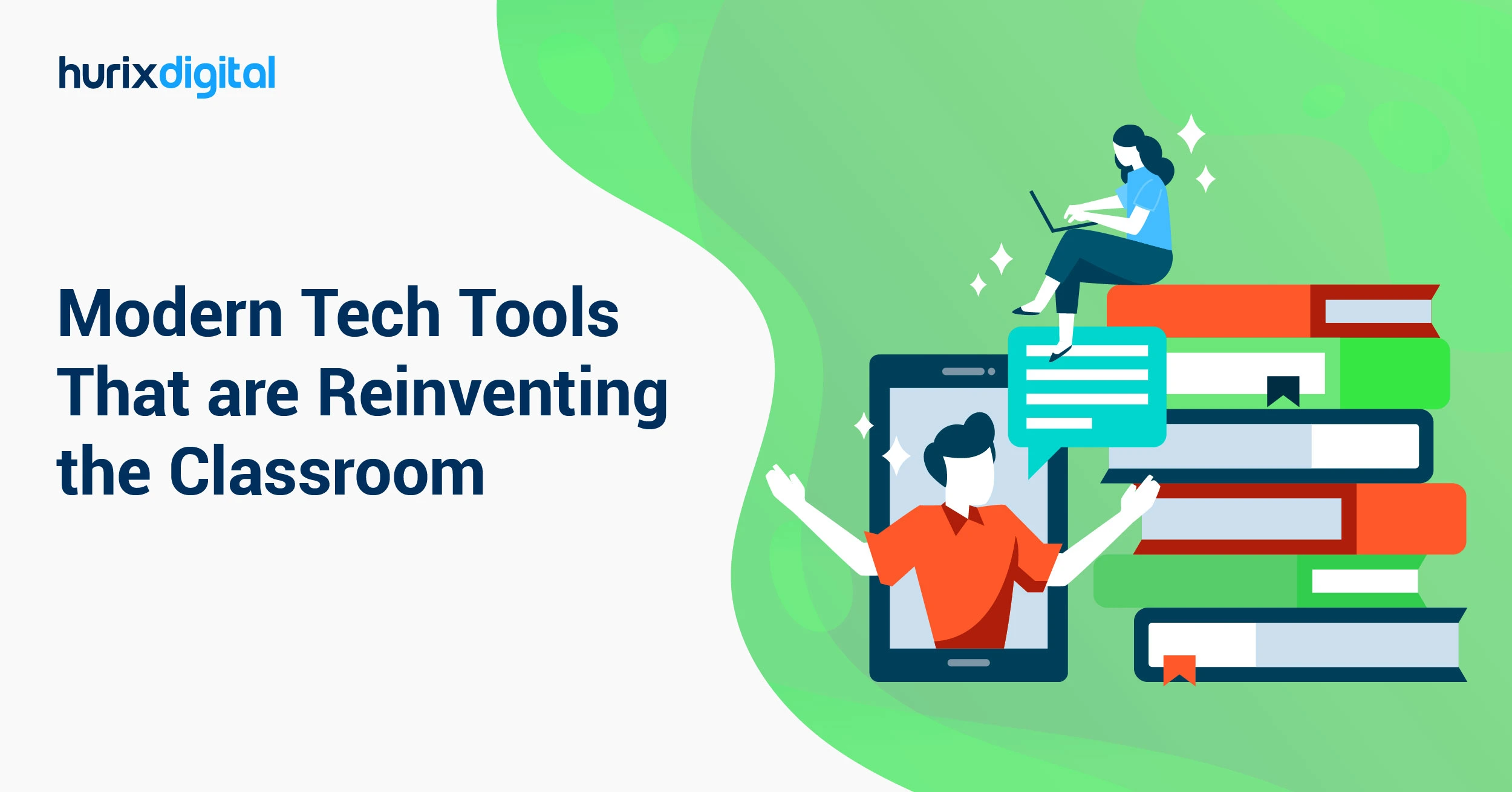
Switch to Blended Learning for Better Learning Outcomes
Summarize with:
The impact of technology in transforming the classrooms of today has been phenomenal. Instructors are now adopting different teaching methods to fit the learning styles, interests, and expectations of the learners. This is one of the reasons why blended learning is becoming the preferred teaching strategy for instructors and learners alike. The rising popularity of the concept is because of the fact that it effectively combines the advantages of traditional instruction mode with online learning methodologies.
In this post, we are going to discuss everything you need to know about blended learning and blended learning classrooms.
Table of Contents:
- Types of Blended Learning
- Online Model
- Flex Model
- Rotation Model
- Self-Blend Model
- Online Lab
- Face-to-Face Model
- What are the Benefits of Blended Learning for Learners and Organizations?
- What are Some of the Potential Drawbacks to the Blended Learning Model?
- Why is Blended Learning Effective?
- How to Implement Blended Learning?
- What is Blended Learning in the Workplace?
- What are the Assessment Techniques Used in Blended Learning?
- How Do Employers Track Their Learners’ Progress in a Blended Learning Model?
- Wrapping Up
What is Blended Learning?
An excellent learning approach, blended learning refers to a combination of offline (traditional learning methodologies, face-to-face learning) and online learning strategies (online quizzes, discussion boards, and other resources) in perfect synchronization with each other.
Leveraging technology, educational software, and new learning tools, educators across the world are increasingly blending in-class and online learning strategies giving rise to this interesting model known as Blended Learning.
Also known as mixed or hybrid learning, this learning approach can be put to use in various forms. While some organizations prefer to use blended learning as the primary teaching method within the course curriculum, others use this technique only in specific instances.
The main blended learning objectives are to give learners more freedom in the way that they learn and engage in their education.
Also Read: What are the Best Blended Learning Examples for 2024?
Types of Blended Learning
Blended learning is a flexible and effective approach to learning by including the best in face-to-face instruction and online learning.
Following are the six primary types of blended learning models:
1. Online Model
In this model, a teacher can present lectures online by various forms of digital tools such as videos, quizzes, and forums for discussions. Intermittent in-class meetings are arranged with a view to giving room for face-to-face interaction and clearing of doubts besides group discussions.
2. Flex Model
The Flex Model allows for individualistic learning. It permits students to learn individually at their own convenience and according to the suitability of the chosen learning activity.
The Flex model combines online lab models of blended learning with in-person instruction, therefore giving students flexibility and support. Learners will access online content independently, but they will also receive face-to-face guidance from the instructor when needed.
3. Rotation Model
Rotation Model Learners rotate through various learning stations, which could be online activities or face-to-face instruction. This model is often used in a flipped classroom, where learners attend class better prepared because they watch lectures or read materials via the online learning platform.
Classroom activities, which include hands-on activities, discussions in groups, and problem-solving exercises during face-to-face classes, are more specific procedures.
4. Self-Blend Model
The Self-Blend Model trains learners to be more responsible for their learning process. The learners will also use other online resources apart from learning. In this model, independent learning and critical thinking are generated.
5. Online Lab
The Online Lab is a totally digital version of learning that makes minimal use of face-to-face instruction or excludes it.
Online Lab content is accessed and completed by the learner alone using smartphones, tablets, or laptops. The model is very efficient for self-paced learning and remote training.
6. Face-to-Face Model
In the Face-to-Face Model, instruction takes place within a traditional classroom under an instructor’s guidance. Though this model isn’t strictly blended learning, it can be combined with online resources and activities to become more engaging and effective in learning.
What are the Benefits of Blended Learning for Learners and Organizations?
Blended learning offers a powerful approach to education and training, combining the best of both worlds: face-to-face instruction and online learning.
By merging these two modalities, organizations can create more engaging, effective, and flexible learning experiences for their employees.
Let’s explore the key benefits of why blended learning is effective for both learners and organizations.
Benefits for Learners
- The approach offers learners the flexibility to learn remotely and conveniently at their own pace.
- Because of its collaborative nature, it allows learners to interact with other fellow participants as well as instructors which is great for networking and social learning.
- Blended learning classrooms offer learners a more comprehensive understanding of the curriculum/course content due to its blended nature.
Benefits for Organizations
- Extremely cost-efficient for organizations due to reduced expenses related to face-to-face training including space, travel, and printing material costs.
- This leads to better learner engagement because of various eLearning methods used by organizations such as webinars, online tutorials, and more.
- Blended learning classrooms result in greater ROI for companies due to cost efficiency.
What are Some of the Potential Drawbacks to the Blended Learning Model?
Although blended learning classrooms are quite popular in the present educational environment, there are a few pitfalls to the approach as well. Some of these are –
- The model is not a natural fit for courses that require a more traditional or hands-on learning approach. For such courses, it is difficult to translate the curriculum in an online environment.
- The tech resources used in blended learning need to be extremely reliable and easy to use by all stakeholders or else the initiative will fail miserably.
- Another disadvantage of blended learning is the cognitive load for students. If the instructors are new to the blended model, the result might be over-delivering the content and educational activities which will impact students negatively.
Why is Blended Learning Effective?
Various reasons make blended learning effective and popular. Some of these are-
- The approach caters to different learning styles and helps in improving the performance.
- Offers increased flexibility as it enables anytime, anywhere learning.
- It is an inclusive model that has visual, written, as well as auditory components to cater to every type of learner.
- It allows the participants to learn at their own pace and their own ability level.
- The model eliminates the need to attend classes physically, thus benefiting students who cannot attend classes at set times every day or week.
- Having different learning components keeps learners engaged, resulting in better outcomes.
How to Implement Blended Learning?
A well-designed and well-implemented blended learning program needs careful planning and execution. These are some of the most crucial aspects to consider here:
- Define Your Learning Objectives: Clearly articulate the desired learning outcomes of your blended learning program. Then, you can better pinpoint what proportion of face-to-face and online learning activities should be used for such a program.
- Select an Appropriate Blended Learning Model: The selected blended learning model should align to the needs of the learners and also be subject to the goals of the organization. Consider the following factors such as learner demographics, technological capabilities, and nature of content.
- Design Engaging Learning Experiences Online: Determine any face-to-face activities, which are pertinent to learners’ needs, interesting, and highly interactive, which should be mixed together appropriately. Appropriate instructional strategies include problem-based learning, case studies, simulations, role-playing, and many more.
- Leverage Technology: Invest in a good learning management system in support of blended learning endeavors. Use various technology tools, such as video conferencing, online forums, and collaborative tools, to enhance the quality of learner-instructor interactions.
- Provide Adequate Help: Ensure learners have the required technology and support to participate in online activities. Encourage learners to request technical assistance and guidance while learning to navigate an online learning environment.
- Monitor and Assess: Monitor the performance of your blended learning program regularly. Gather data on learner engagement, satisfaction, and performance. Use this data to identify areas for improvement and improve your approach.
This way, you can implement a blended learning program successfully that delivers phenomenal learning outcomes.
Also Read: How to Create Content for a Blended Learning Model: A 5-Step Guide
What is Blended Learning in the Workplace?
Blended learning at the workplace is a solution-based approach used with the objective of organizational learning programs to empower employees and help them improve their job performance so they can collectively drive business objectives.
It is a widely used and valuable technique for learning in the workplace for a number of reasons. Given below are a few ways it can help employees in a corporate setup-
- Enhanced employee engagement as employees have control over their training with the ability to use smart devices or laptops when and where it is convenient for them.
- More effective training feedback because it allows the collection of valuable data through tests, online quizzes, etc.
What are the Assessment Techniques Used in Blended Learning?
One of the pitfalls of blended learning is limitations regarding end-of-training evaluations. In such a scenario, some useful assessment techniques deployed in blended learning include-
- Mid-Training Evaluations: These can be used to get detailed feedback on course content, teaching methods, and learning activities to help improve teaching and learning.
- Summative Assessment: These assessments can help instructors improve overall course effectiveness and determine whether course objectives are being met.
- Peer Evaluations: Either summative or formative, peer evaluation involves peers providing an added perspective in areas of curriculum, course design, and teaching approaches that students lack the ability to provide.
How Do Employers Track Their Learners’ Progress in a Blended Learning Model?
One of the ways to do this is to conduct a survey to get an idea of the requirements and learning preferences of the end learners are met. For example, if the blended learning module was designed and implemented for a particular team, get feedback on the choice of format and if they are comfortable with the same.
No. While blended learning is a mix of online and face-to-face learning strategies, online learning involves only digital methods to impart learning.
Wrapping Up
The best of classroom learning, along with the flexibility of online learning, allows blended programs to offer the best solution to enhance learner engagement, improve knowledge retention, and maximize learning outcomes.
Hurix Digital offers an end-to-end suite of learning and development solutions. We can help guide an effective blended learning strategy within an organization mainly through expert design of interesting learning experiences and leveraging leading-edge technology that facilitates a culture of continuous learning inside an organization.
Let’s begin today by building a vibrant, highly effective learning environment for your employees. Get a better sense of our services today and understand how we can implement the best of blended learning for you.
Summarize with:

Senior Vice President
Julia brings over 20 years of global experience in digital learning and business strategy. She specializes in client success, enterprise learning solutions, and driving growth through innovation, with a focus on AI, VR, and emerging technologies across diverse industry verticals.
 A Space for Thoughtful
A Space for Thoughtful 



